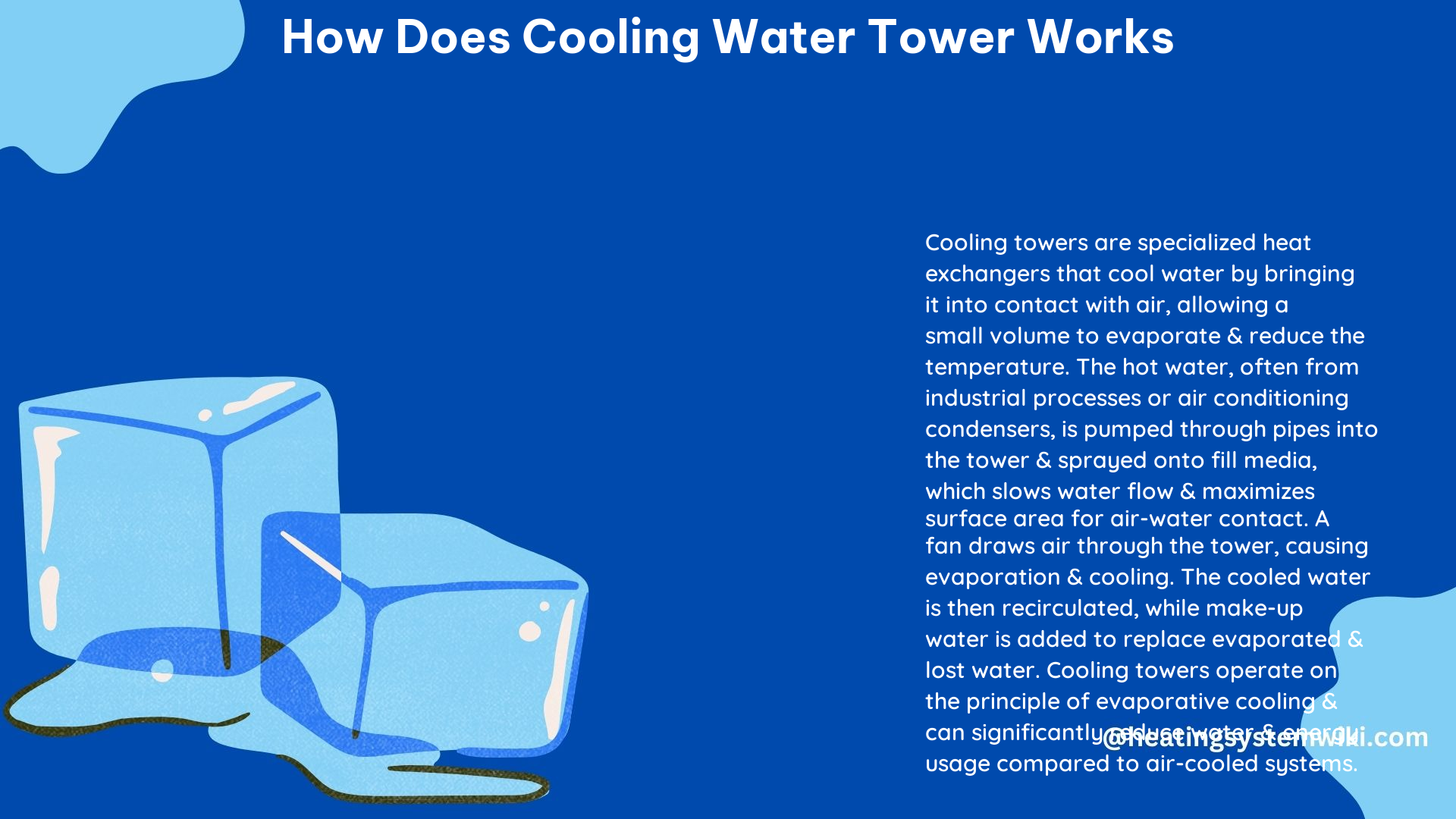Cooling water towers, also known as evaporative cooling towers, are essential components in various industrial and commercial applications, including power plants, HVAC systems, and manufacturing facilities. These towers work on the principle of evaporative cooling, efficiently transferring heat from hot water to the atmosphere, allowing for the reuse of the cooled water in the system.
Key Components and Operation
The basic operation of a cooling water tower involves several critical components:
- Hot Water Inlet: Hot water from an external source is pumped into the top of the tower.
- Fill or Packing: The hot water is sprayed onto a fill or packing material, which is a series of plastic or wooden slats designed to increase the surface area of contact between the hot water and the cooler air.
- Air Intake: Cool air is drawn into the tower through the air intake, which can be natural draft, forced draft, or induced draft.
- Air-Water Interaction: As the cool air flows over the hot water on the fill, a portion of the water evaporates, absorbing heat from the remaining water and cooling it down.
- Cooled Water Collection: The now cooler water collects in the basin at the bottom of the tower and is pumped back into the system for reuse.
- Heat Exhaust: The heat absorbed from the water is expelled from the tower through the air discharge at the top.
Factors Affecting Cooling Tower Efficiency

The efficiency of the evaporative cooling process in a cooling water tower can be influenced by several factors:
- Relative Humidity: Higher relative humidity in the surrounding air reduces the evaporation rate, as the air has a lower capacity to absorb moisture.
- Ambient Temperature: Cooler outside temperatures increase the temperature difference between the hot water and the cool air, enhancing the evaporative cooling effect.
- Wind Velocity: Higher wind speeds across the tower’s surface can improve air-water contact and heat transfer, but excessive wind can disrupt the airflow and reduce efficiency.
- Water Contamination: Impurities or dissolved solids in the water can lead to scale formation, fouling, and reduced heat transfer, decreasing the tower’s overall performance.
- Tower Design: The design of the tower, including the fill material, air intake configuration, and water distribution system, can significantly impact the cooling efficiency.
Cooling Tower Classifications
Cooling towers are classified based on the method used to generate the airflow:
- Atmospheric Draft Towers: These towers rely on the natural draft created by the difference in air density between the hot, moist air exiting the tower and the cooler, denser air outside.
- Mechanical Draft Towers: These towers use fans to either force or induce the airflow through the tower, providing more control over the air movement.
- Forced Draft Towers: Fans are positioned at the air intake to push air through the tower.
- Induced Draft Towers: Fans are positioned at the air discharge to pull air through the tower.
Technical Specifications and Design Considerations
Cooling water towers can vary significantly in size, capacity, and design, depending on the specific application:
- Capacity: Cooling towers can range from small units for commercial buildings to massive structures for power plants, with capacities ranging from a few hundred gallons per minute (GPM) to over 1 million GPM.
- Construction Materials: Cooling towers can be made of various materials, such as concrete, steel, or fiberglass, depending on the application, environmental factors, and cost considerations.
- Drift Eliminators: To reduce water losses due to evaporation, drift eliminators are used to remove entrained water droplets from the exiting airstream. These consist of parallel blades that cause the water droplets to change direction several times before being discharged.
- Cooling Tower Accessories: Cooling towers may also include accessories such as water treatment systems, vibration dampeners, and corrosion-resistant coatings to enhance performance and longevity.
Conclusion
Cooling water towers are essential components in a wide range of industrial and commercial applications, leveraging the principles of evaporative cooling to efficiently transfer heat from hot water to the atmosphere. By understanding the key components, factors affecting efficiency, and technical specifications, operators and designers can optimize the performance of these critical systems.
Reference:
- https://en.wikipedia.org/wiki/Cooling_tower
- https://deltacooling.com/resources/faqs/what-is-a-cooling-tower
- https://www.youtube.com/watch?v=sWJCWDpY9is
- https://www.cooling-tower.com/cooling-tower-design.php
- https://www.engineeringtoolbox.com/cooling-towers-d_777.html
- https://www.spxcooling.com/resources/cooling-tower-basics
